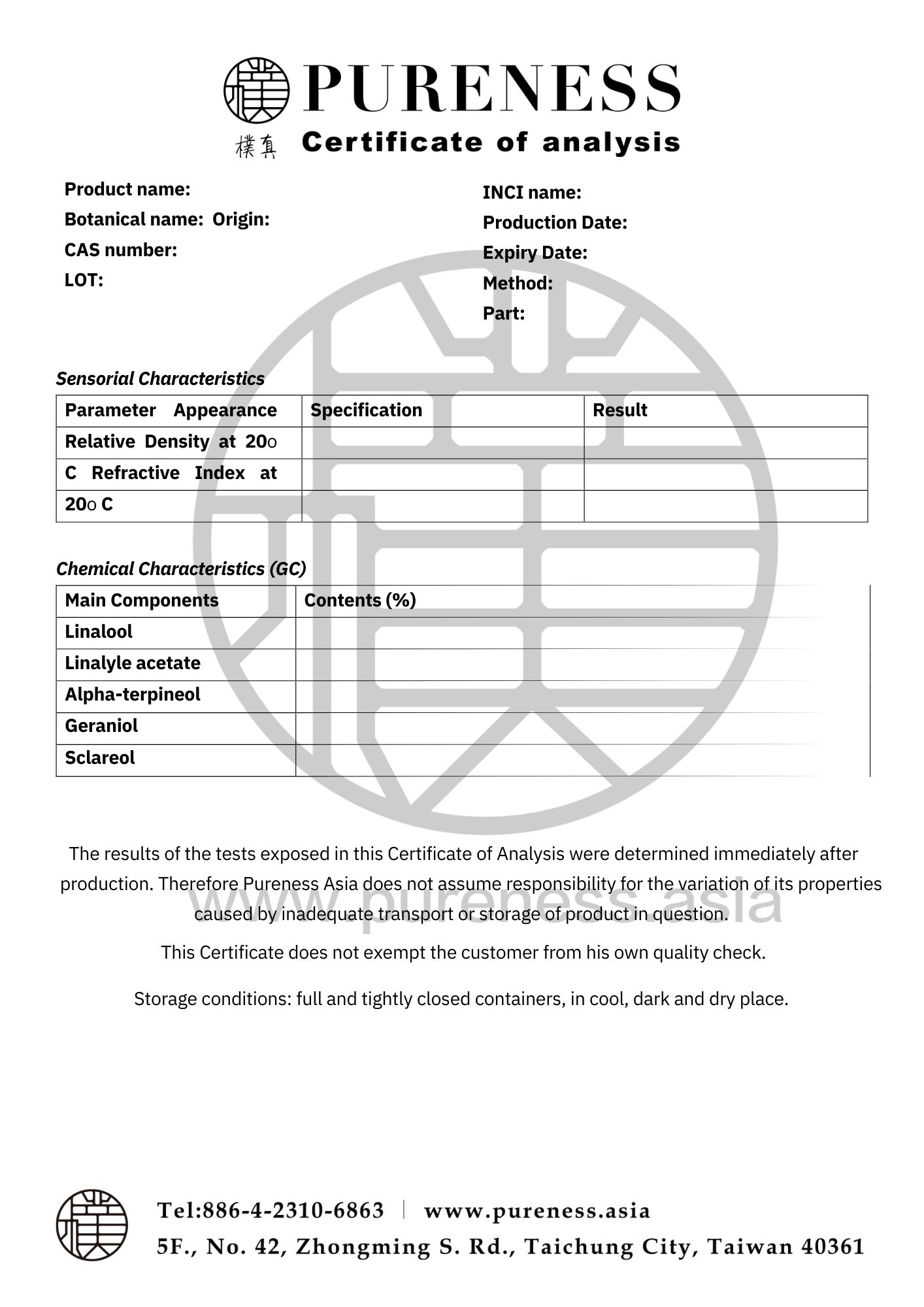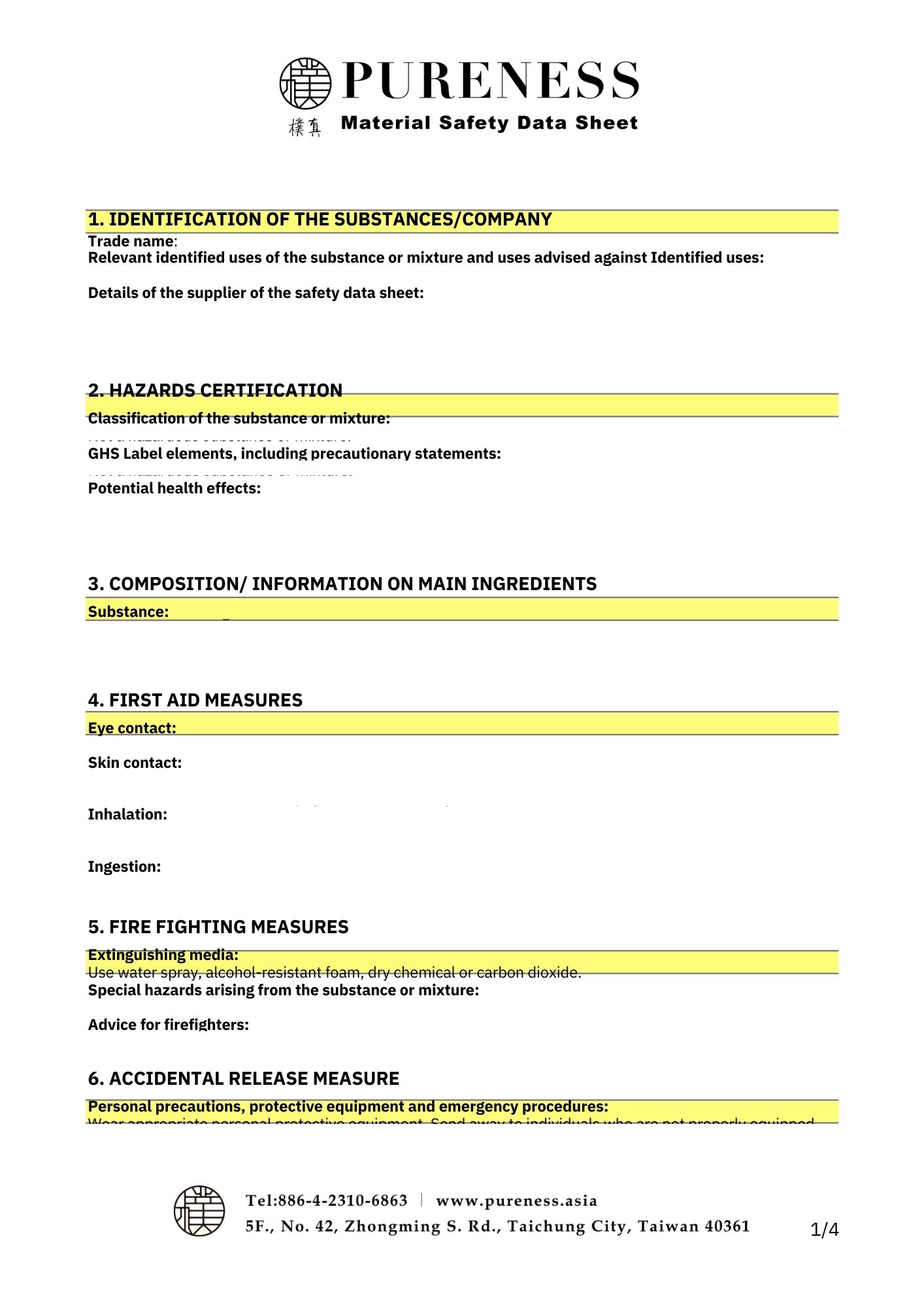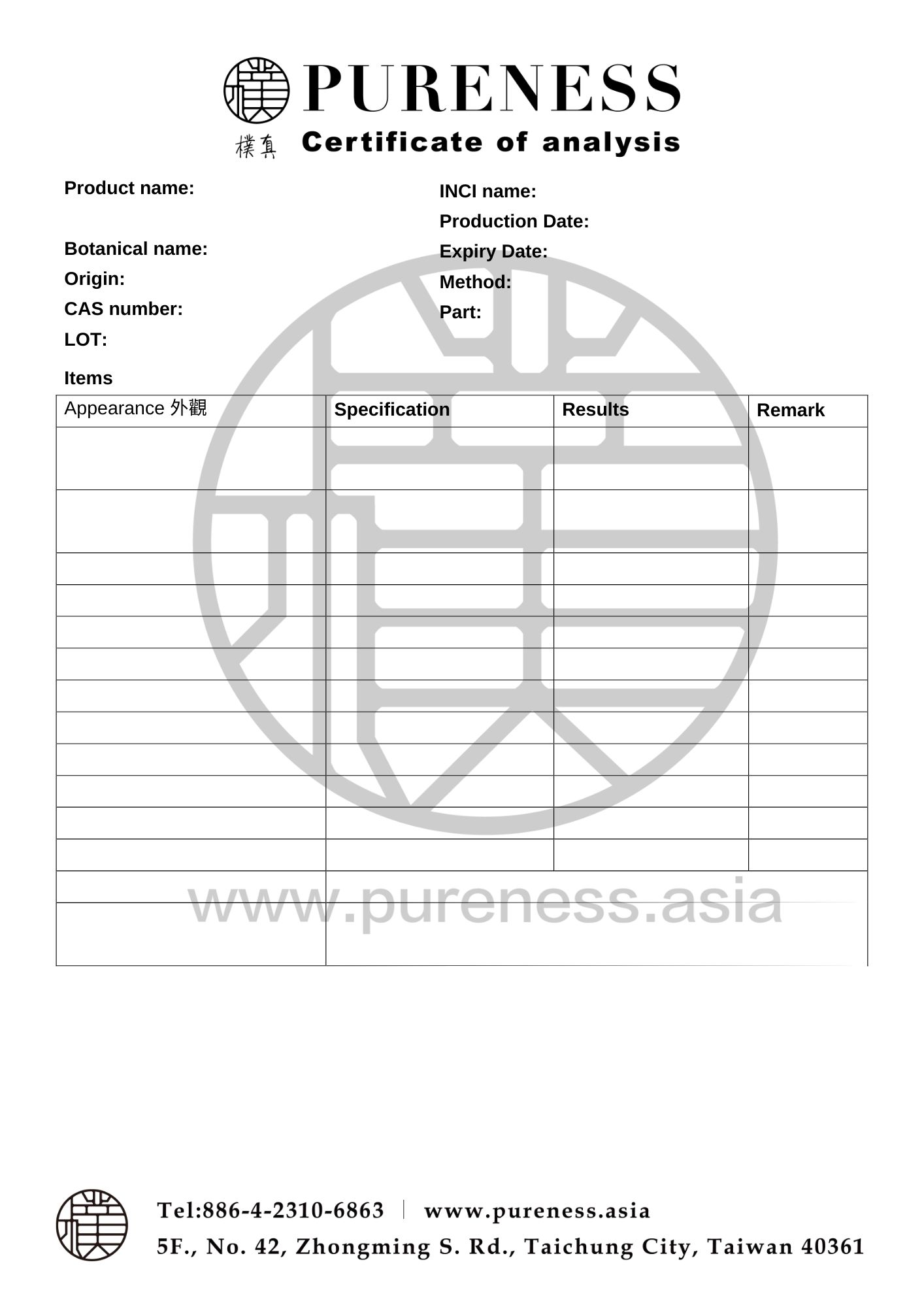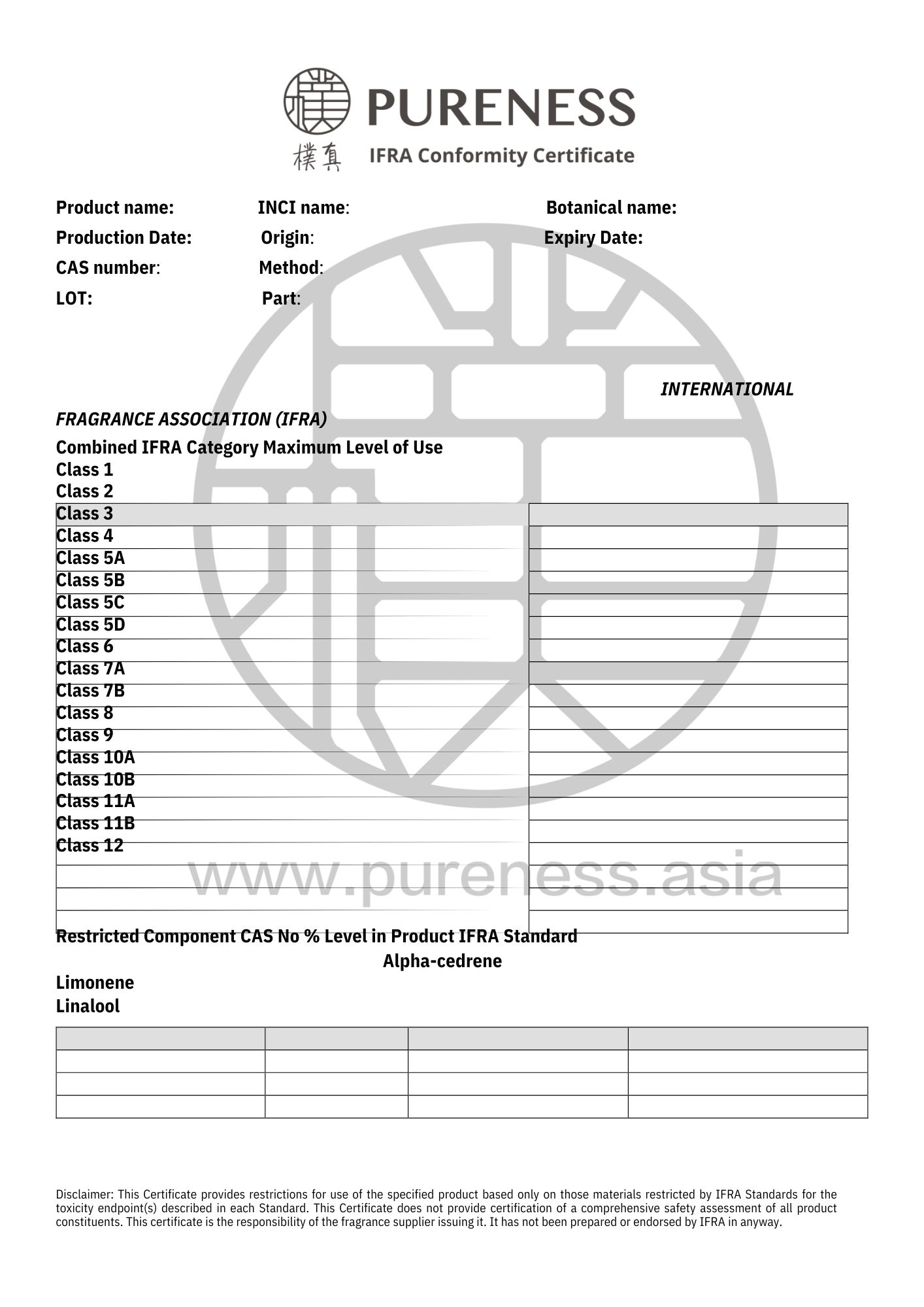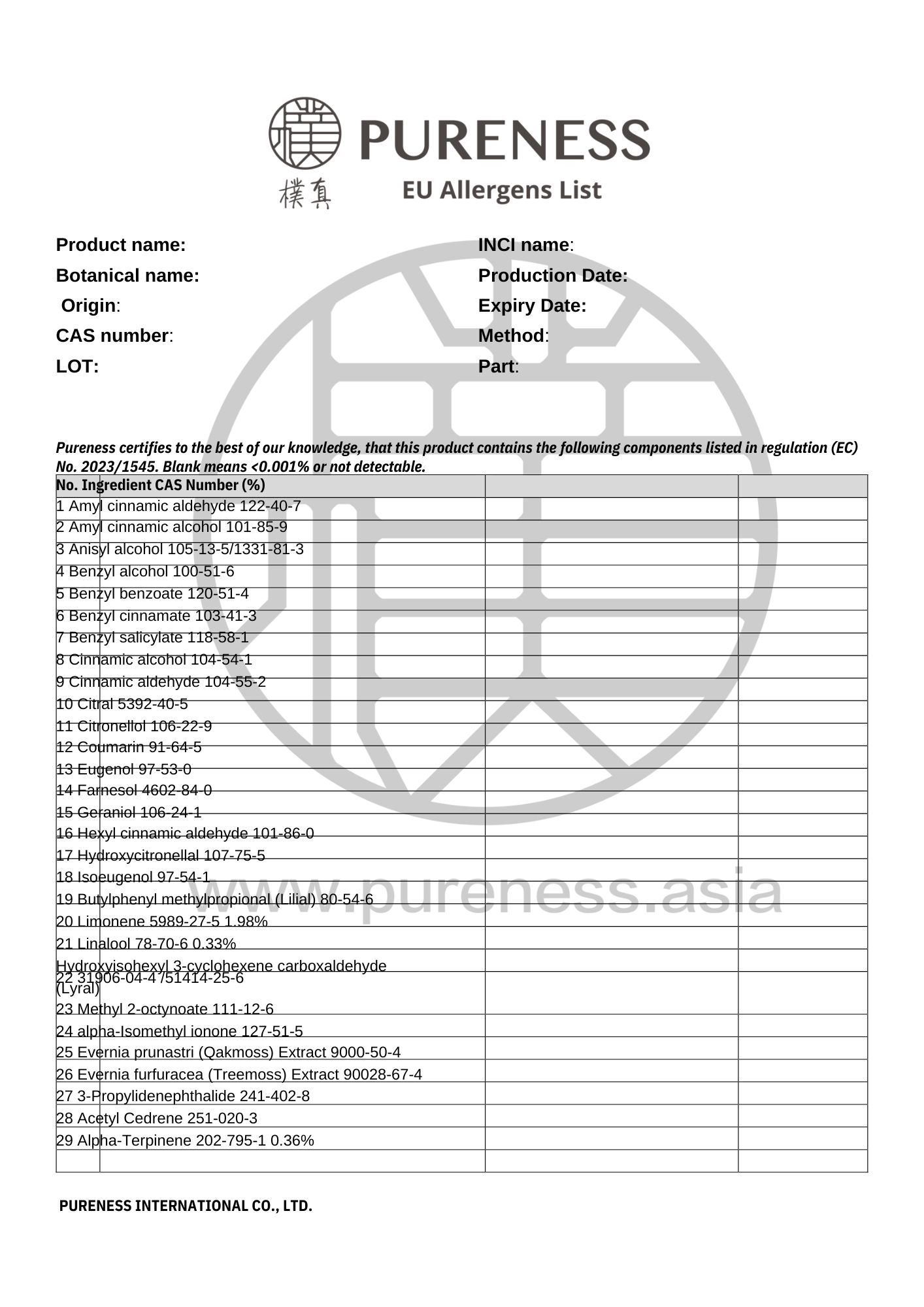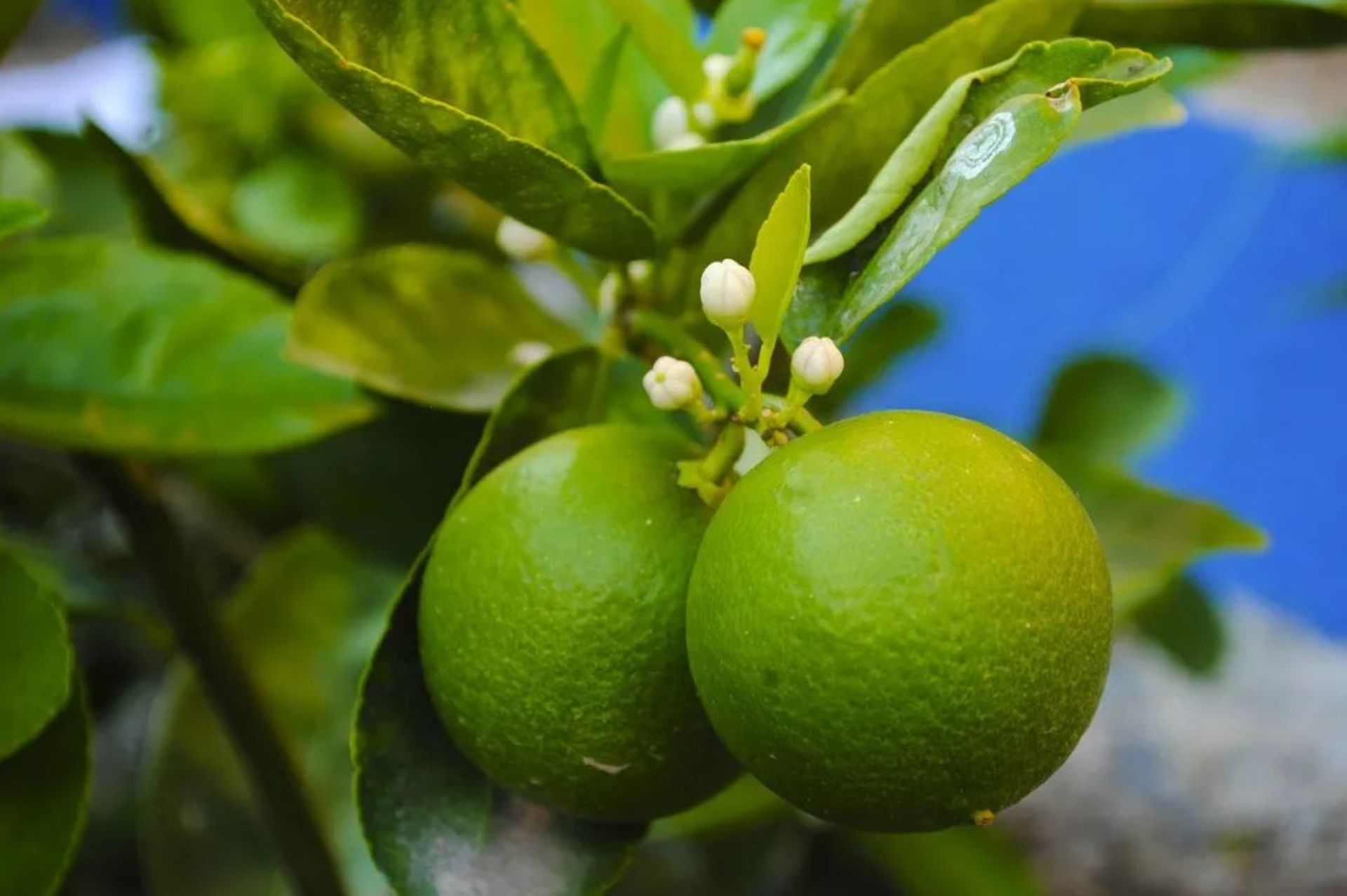
萊姆 Lime Tahiti
拉丁學名|Citrus aurantifolia
主要產地|義大利
原料分類|果實系列
原料規格|500g-25kg 詳情請洽業務
萃取部位|成熟果實的果皮
萃取方式|冷壓
植物科別|芸香科
植物氣味|宛如混合森林、香草和檸檬,清爽平靜的柑橘香
▎精油簡介
萊姆(Lime)很可能原產於印度北部(亞洲熱帶地區),是一種小型喬木,伴隨著許多短硬尖刺,果實近似圓形,小,狀似檸檬,顏色呈綠到淡黃色。萊姆精油最常見的萃取方式是取成熟和未成熟果實混合,以水蒸氣蒸餾法,但也有用壓榨法(主要取未成熟的新鮮綠色果實)。不同萃取方式萊姆精油的化學成分可能會有不同,以蒸餾法含較少檸檬醛、γ-萜品烯、β-蒎烯,較多對繖花烴、萜品烯-4-醇。
萊姆幾乎在熱帶地區的每個家庭中都使用,主要用於調味食品,也用於製備飲料和用於各種醫療用途。豐富的風味和酸味使萊姆成為新鮮或醃製調味醬形式的辛辣菜餚的最愛。葉子和果實有許多藥用用途,其中也有認為與驅邪的信念有關。
萊姆在商業上也用於汁液生產,精油可用於食品和化妝品行業。在柑橘類精油中,萊姆是香料產業全球交易量最大的精油之一。在許多工業裝置中,提取萊姆精油通常是果汁生產後必不可少的步驟。透過對新鮮萊姆皮進行冷壓,透過蒸汽蒸餾或加氫蒸餾來提取精油。如此獲得的精油或混入果汁中以改善口味,或用於其他已知的飲料。這種寶貴的萃取油廣泛用於冰糕,醬菜,南瓜,果醬,果醬,飲料,調味料,甜點,化妝品和許多其他工業產品。原油具有明顯的柑橘氣味,淺綠色,需要進一步加工以用於化妝品和營養用途。
▎成分解析
|主要成分:單萜烯
其成分包括檸檬烯、γ-萜品烯、β-蒎烯、月桂烯,另有微量的桉油醇、香葉醛、呋喃香豆素(壓榨法)等,更多生理功效請與我們聯繫。
|研究認證

▸ 萊姆由於其感官特性而被用作在食品中賦予檸檬味和氣味。另外,在食品工業中廣受讚賞。

▸ 萊姆用於病菌、糖尿病、高血壓、心臟、肝臟、骨骼及泌尿系統問題有相關研究。
|原料認證
欲取得相關認證資料請 點我加入官方LINE@
▎參考文獻
- Nithithep Narang and Wannee Jiraungkoorskul. Anticancer Activity of Key Lime, Citrus aurantifolia. Pharmacogn Rev. 2016 Jul-Dec; 10(20): 118–122.
- Essential Oils in Food Preservation, Flavor and Safety. 2016, Pages 531-537
- USDA. Citrus : World markets and trade. Washington United States Department of Agriculture, Foreign Agricultural Service; 2016.
- Kaewsuksaeng S, Tatmala N, Srilaong V, Pongprasert N. Postharvest heat treatment delays chlorophyll degradation and maintains quality in Thai lime ( Citrus aurantifolia Swingle cv. Paan) fruit. Posthar Biol Techn;
- Lv X, Zhao S, Ning Z, Zeng H, Shu Y, Tao O, et al. Citrus fruits as a treasure trove of active natural metabolites that potentially provide benefits for human health. Chem Cent J. 2015; 68.
- Dongmo P, Tchoumbougnang F, Boyom F, Sonwa E, Zollo P, Menut C. Antiradical, antioxidant activities and anti-inflammatory potential of the essential oils of the varieties of Citrus limon and Citrus aurantifolia wing in Cameroon. Res. 2013;3:1046–57.
- Liu Y, Heying E, Tanumihardjo S. History, global distribution, and nutritional importance of Citrus fruits. Compr Rev Food Sci Food Saf. 2012;11:530–45.
- Zandkarimi H, Talaie A, Fatahi R. Evaluation of cultivated lime and lemon cultivars in Southern Iran for some biochemical compounds. Food. 2011;5:84–8.
- Kiefer S, Weivel M, Smits J, Juch M, Tiedtke J, Herbst N. Citrus flavonoids with skin lightening effects – Safety and efficacy studies. Int J Appl Sci. 2010;132:46–54.
- FAO, 1991. Citrus juices: trends and prospects in world production and international trade. FAO Economic and Social Development Paper, No. 78: 54 pp.
- Sharma SR, 1989. Evaluation of clones of acid lime (Citrus aurantifolia) for resistance to citrus tristeza virus. Indian Journal of Plant Protection, 17(2): 213-218.
- Reuther W, Calavan EC, Carman GE eds., 1989. The citrus industry. Volume 5. California, USA: Division of Agriculture and Natural Resources, University of California, 374 pp.
- Motlagh FH, Quantick PC, 1988. Effect of permeable coatings on the storage life of fruits. I. Pro-long treatment of limes (Citrus aurantifolia cv. Persian). International Journal of Food Science and Technology, 23(1) :99-105.
- Singh HP, Chadha KL, 1988. Regulation of flushing and flowering in acid lime (Citrus aurantifolia Swing.) through stress management. Progressive Horticulture,
- Whiteside JO, Garnsey SM, Timmer LW eds., 1988. Compendium of citrus diseases. St. Paul, Minnesota, USA: American Phytopathological Society, 80 pp.
- Moncur MW, 1988. Floral development of tropical and subtropical fruit and nut species. Melbourne, Australia: CSIRO, 154-157.
|部分圖片來自網路,若有侵權請聯繫刪除|
